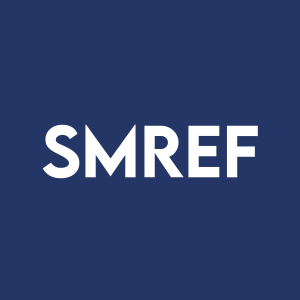Sun Summit Reports Final Exploration Results from the JD Project: Extends Footprint of Creek Zone Mineralization and Defines New Porphyry and Epithermal Targets
Rhea-AI Summary
Sun Summit Minerals (TSXV: SMN) (OTCQB: SMREF) has reported final results from its 2024 exploration program at the JD Project in B.C.'s Toodoggone District. Key findings include mineralization in all 12 drill holes, with the Creek Zone remaining open for expansion. Notable results include a grab sample returning 222 g/t Au and hole JD-24-011 intersecting 2.4 metres of 114.39 g/t Ag with 0.40 g/t Au. The company identified new porphyry and epithermal targets, and discovered a porphyry system north of the Creek Zone. Multiple soil geochemical anomalies were defined at Creek and Belle zones. Sun Summit is planning an aggressive exploration program for 2025, including infill and step-out drilling at Creek and Finn zones.
Positive
- Mineralization discovered in all 12 drill holes across multiple targets
- High-grade gold sample of 222 g/t Au from Creek Zone
- Successful expansion of Creek Zone mineralization with 400m step-out drill hole
- Discovery of new porphyry system north of Creek Zone
Negative
- None.
News Market Reaction 1 Alert
On the day this news was published, SMREF declined 19.78%, reflecting a significant negative market reaction.
Data tracked by StockTitan Argus on the day of publication.
Vancouver, British Columbia--(Newsfile Corp. - November 18, 2024) - Sun Summit Minerals Corp. (TSXV: SMN) (OTCQB: SMREF) announces final drilling, geochemical and geophysical results from the inaugural summer 2024 exploration program across the JD Project in the Toodoggone District, north-central B.C.
The latest exploration results further demonstrate the high-prospectivity for both epithermal-related gold-silver mineralization as well as porphyry-related copper-gold mineralization across the JD project. Follow-up targets at the emerging Creek Zone and priority new target areas have been identified and the Company has began planning for a significant exploration program set to commence in spring 2025.
Key Highlights:
- Mineralization intersected in every hole drilled in 2024: All 12 holes drilled across multiple targets intersected encouraging zones of mineralization.
- Creek Zone mineralization remains open: Results from 400 m step-out drill hole (JD-24-012) demonstrate that gold mineralization is open along strike to the southeast. Considerable follow-up drilling is required at Creek Zone to fully define gold mineralization extents and structural controls.
- Near-surface high-grade gold mineralization at Creek Zone: A grab sample returned 222 g/t Au, which supports the shallow, near-surface high-grade mineralization potential of the Creek Zone.
- Strong vein-hosted silver-gold mineralization discovered in reconnaissance holes along the Finn to Creek Corridor: Hole JD-24-011 intersected 2.4 metres of 114.39 g/t Ag with 0.40 g/t Au, which demonstrates the strong prospectivity for precious metal mineralization along the 4.5 km Finn to Creek Corridor.
- Porphyry system intersected in two wildcat holes north of the Creek Zone: A broad zone of interpreted porphyry-related distal alteration and local mineralization was identified in two exploration holes north of the Creek Zone. Further examination of existing airborne VTEM and radiometric geophysical data, plus additional IP, is warranted at this target as well as other look-alike targets north of the Creek Zone.
- Numerous multi-element soil geochemical anomalies defined on the Creek Zone and Belle Zone grids: New soil geochemical anomalies are locally associated with geophysical anomalies and represent possible epithermal or porphyry-targets.
- Significant exploration program in preparation for 2025: Planning is underway for an aggressive program at JD in 2025 which will include infill and step-out drilling at the Creek and Finn zones as well as exploration holes testing multiple priority targets. Additional geochemical and geophysical surveys will also be conducted across priority target areas lacking coverage.
"The final results from our 2024 exploration program at the JD Project underscore the exceptional potential of our project in the Toodoggone District," stated Sharyn Alexander, President of Sun Summit Minerals. "The successful expansion of the Creek Zone and the identification of multiple high-priority epithermal and porphyry targets highlight the extensive mineralization opportunities across the property. With the Creek Zone remaining open along strike and newly identified areas showing high-grade mineralization at surface, we're excited to prepare for an aggressive exploration program in 2025. Our upcoming program will build on these discoveries, with targeted infill and step-out drilling and additional geophysical and geochemical surveys to unlock the full potential of the JD Project. This next phase of exploration will ensure Sun Summit is well positioned to capitalize on high-grade and bulk-tonnage discoveries in this world-class mining district."
2024 Exploration Program
The summer 2024 exploration program at JD consisted of over 2,500 metres of diamond drilling in twelve holes, the collection of over 1,200 soil samples and over 50 rock samples, and completion of over 20 line kilometres of induced polarization (IP) geophysical surveying (Figure 1). Work was carried out with two main objectives, 1) confirm and expand on reported high-grade gold mineralization at the Creek Zone (see September 19th, October 2nd, and October 16th, 2024 news releases), and 2) define new exploration targets to be evaluated in future exploration programs. Both objectives were met, highlighted by:
1. Significant exploration potential at the Creek Zone:
- At the Creek Zone, broad zones of disseminated gold mineralization associated with moderate to strong potassic alteration, are cored by high-grade quartz-carbonate-gold-base metal veins and vein-breccias with strong potassium feldspar halos (e.g., 122.53 metres of 2.11 g/t gold including 4.04 metres of 46.78 g/t gold, see October 2nd, 2024 news release). Near-surface mineralization, with strong continuity, has been intersected over a northwest-trending area of approximately 650 by 300 metres where it remains open in most directions.
- An important outcome from the 2024 drilling at the Creek Zone is the recognition of previously undocumented, near-surface bulk-tonnage style disseminated gold mineralization (Figure 3). Most historical holes at the Creek Zone were not continuously sampled which resulted in a failure to recognise the bulk-tonnage potential of the target area (Figures 2 and 3).
- Similar to the Finn Zone, 4.5 km to the east, epithermal-related mineralization at the Creek Zone is interpreted to have been emplaced proximal to a porphyry system. Future exploration programs will target both near-surface gold mineralization as well as related and deeper porphyry copper-gold mineralization.
2. Numerous new targets have been defined across the project area, including:
- Fericrete - strong porphyry-related alteration associated with open-ended coincident high-chargeability and resistivity anomalies (Figure 5).
- Creek North - strong Cu-Au-Zn soil anomaly coincident with a high-chargeability and magnetic-high geophysical anomaly (Figure 5).
- Belle North - strong Au-As-Cu-Zn soil anomaly associated with a defined magnetic lineament (Figure 7).
- Belle South - strong Cu-Zn-Ag-Au soil anomaly associated with local high-grade Au veins discovered in historic trenching programs1 (Figure 7).
Figure 1. Map showing the location of exploration work completed in 2024 at the JD project
To view an enhanced version of this graphic, please visit:
https://images.newsfilecorp.com/files/6142/230373_81336d515433a811_001full.jpg
Planning for a significant exploration program in 2025 has commenced. Work is anticipated to include significant drilling at the Creek and Finn zones as well as initial and follow-up drill tests at additional high-priority epithermal and porphyry targets. Additional geophysical and geochemical surveys will also be completed.
Creek Zone Exploration
The last hole of the drill program (JD-24-012) targeted the southeast extension of the modelled Creek Zone controlling fault system as well as a recently defined strong coincident chargeability-resistivity-high IP anomaly (Figures 2 and 4). Hole JD-24-012 was collared 400 metres southeast of holes CZ-24-003 (95.50 metres of 0.70 g/t gold including 34.0 metres of 1.32 g/t gold and including 18.0 g/t gold over 0.50 metres, see September 19th, 2024 news release) and CZ-24-004 (122.53 metres of 2.11 g/t gold including 4.04 metres of 46.78 g/t gold, see October 2nd, 2024 news release), and 375 metres southeast of hole CZ-24-005 (57.95 metres of 2.69 g/t gold from 145.05 metres including 19.50 metres of 7.31 g/t gold, see October 16th, 2024 news release) and drilled to the southwest.
To view an enhanced version of this graphic, please visit:
https://images.newsfilecorp.com/files/6142/230373_81336d515433a811_002full.jpg
Hole JD-24-012 collared in disseminated gold mineralization (Figures 2 and 3). The mineralized zone started at 4.5 metres and returned 17.8 metres of 0.59 g/t gold and 10.0 metres of 0.75 g/t gold including 1.8 metres of 2.49 g/t Au from 40.5 metres. Similar to the first five holes drilled at the Creek Zone, JD-24-012 intersected a bedded sequence of volcaniclastic and intermediate volcanic rocks interpreted to be a sequence within the McClair Member of the Early Jurassic Toodoggone formation. Near-surface, bulk-tonnage style disseminated gold mineralization is associated with selectively pervasive, epidote-chlorite-pyrite alteration.
It is interpreted that JD-24-012 collared in the footwall to the Creek Zone controlling fault system and only intersected peripheral disseminated mineralization. Step-out drilling to the northeast of JD-24-012 is warranted to fully test the structural model and confirm the extension of high-grade, vein-hosted mineralization along trend to the southeast.

Figure 3. Oblique view through Creek Zone drill holes
To view an enhanced version of this graphic, please visit:
https://images.newsfilecorp.com/files/6142/230373_81336d515433a811_003full.jpg
Table 1. Creek Zone Assay Results 1,2, 3
| Hole ID | From (m) | To (m) | Interval (m) | Au (g/t) | Ag (g/t) | Zn (%) | Cu (%) |
| CZ-24-01* | 63.0 | 124.5 | 61.5 | 1.07 | 0.80 | 0.09 | |
| inc. | 78.0 | 121.5 | 43.5 | 1.40 | 1.10 | 0.12 | |
| inc. | 104.0 | 107.6 | 3.6 | 7.28 | 9.40 | 0.98 | |
| inc. | 104.0 | 104.5 | 0.5 | 24.30 | 43.70 | 4.46 | |
| CZ-24-02* | 41.9 | 71.0 | 29.1 | 1.64 | 1.40 | 0.45 | |
| inc. | 48.7 | 58.3 | 9.5 | 3.89 | 3.60 | 1.10 | |
| inc. | 51.1 | 52.0 | 0.9 | 16.60 | 11.60 | 4.47 | |
| and | 111.0 | 123.0 | 12.0 | 0.33 | 0.20 | 0.01 | |
| CZ-24-03* | 4.0 | 138.0 | 134.0 | 0.57 | 0.40 | 0.07 | |
| inc. | 4.0 | 99.5 | 95.5 | 0.70 | 0.50 | 0.09 | |
| inc. | 58.0 | 92.0 | 34.0 | 1.32 | 1.10 | 0.22 | |
| inc. | 58.0 | 66.5 | 8.5 | 2.82 | 1.90 | 0.61 | |
| inc. | 61.5 | 62.0 | 0.5 | 18.00 | 2.90 | 1.37 | |
| inc. | 84.0 | 92.0 | 8.0 | 1.83 | 2.00 | 0.14 | |
| CZ-24-004* | 3.0 | 125.5 | 122.5 | 2.11 | 0.30 | ||
| inc. | 53.0 | 111.0 | 58.0 | 4.00 | 0.50 | ||
| inc. | 66.0 | 66.7 | 0.7 | 16.70 | 1.10 | ||
| inc. | 91.0 | 111.0 | 20.0 | 10.01 | 0.90 | ||
| inc. | 107.0 | 111.0 | 4.0 | 46.78 | 3.10 | ||
| inc. | 108.0 | 109.5 | 1.5 | 121.00 | 7.30 | ||
| and | 146.5 | 159.0 | 12.5 | 0.32 | 0.10 | ||
| CZ-24-005* | 46.8 | 111.0 | 64.2 | 0.69 | 0.61 | 0.00 | 0.08 |
| inc. | 46.8 | 57.0 | 10.2 | 1.93 | 1.58 | 0.01 | 0.27 |
| and | 145.1 | 203.0 | 58.0 | 2.69 | 1.72 | 0.01 | 0.17 |
| inc. | 170.5 | 203.0 | 32.5 | 4.54 | 2.92 | 0.02 | 0.27 |
| inc. | 179.5 | 199.0 | 19.5 | 7.31 | 4.66 | 0.04 | 0.44 |
| inc. | 179.5 | 179.8 | 0.3 | 362.00 | 121.00 | 2.23 | 18.15 |
| inc. | 196.9 | 199.0 | 2.1 | 21.63 | 26.58 | 0.06 | 1.45 |
| inc. | 196.9 | 197.5 | 0.6 | 53.60 | 53.60 | 0.12 | 4.06 |
| inc. | 198.5 | 199.0 | 0.5 | 21.60 | 33.90 | 0.03 | 0.15 |
| JD-24-012 | 4.5 | 22.3 | 17.8 | 0.59 | 2.00 | ||
| and | 34.0 | 44.0 | 10.0 | 0.75 | 3.18 | ||
| inc. | 34.9 | 42.3 | 7.4 | 0.92 | 3.74 | ||
| inc. | 40.5 | 42.3 | 1.8 | 2.49 | 3.97 |
* Previously released results
- Intervals are downhole core lengths. True widths are unknown.
- Calculations are uncut and length-weighted using a 0.10 g/t gold cut-off.
- Grades have not been capped in the length-weighted averaging.
Prospecting while geological and structural mapping across the Creek Zone resulted in the collection of over 20 grab samples. Rock samples were preferentially collected from outcrop when available, however, outcrop was generally scarce at lower elevations. Float samples in the Creek Zone trench and talus at higher elevations are angled pieces that are likely locally derived. Mapped geology in the Creek Zone area indicated rocks are dominantly andesitic tuffs with varying degrees of propylitic alteration. The Creek Zone showing outcrop is a silica-flooded breccia with euhedral quartz lining vugs and pervasive silicification of the surrounding rock, possibly a fault plane based on limited slickensides. The breccia is angular, monomictic, and poorly sorted, with a jigsaw-fit texture and a silica matrix that contains pyrite blebs.
Structural mapping suggests there is a steeply-dipping northwest orientation that aligns the surface Creek Zone exposure to distinct mineralized veins encountered in recent drilling (e.g., CZ-24-001 to 005). The vein and fault system can be traced over a strike length of at least 650 metres, with the possibility of an extension to the southeast by either fault off-set or a second, parallel, splay fault/vein system.
Surface sampling at the Creek Zone was focused mostly along a creek bed that transects the target area (Figure 2). Sample B03976, a frost-heaved flat slab laying directly on exposed bedrock is comprised of a vuggy quartz-carbonate cemented breccia that ran 222 g/t Au with 46.4 g/t Ag and 0.09 % Zn (Figure 2, Table 2). Other samples collected from outcrop along the creek bed returned grades up to 4.7 g/t Au (Table 2). These assay results demonstrate the strong near-surface, high-grade gold potential of the Creek Zone.
Table 2. Select assay highlights of rock chip sample results from the Creek Zone
| Sample ID | Description | Sample Type | Au (g/t) | Ag (g/t) | Zn (ppm) | UTM E | UTM N | Elevation |
| B03976 | quartz vein in volcanic breccia | subcrop | 222 | 46.4 | 862 | 608462 | 6368044 | 1576 |
| B01501 | quartz vein in volcanic breccia | subcrop | 4.74 | 3.09 | 779 | 608462 | 6368044 | 1576 |
| B03954 | silicified breccia | outcrop | 3.68 | 2.24 | 409 | 608461 | 6368043 | 1578 |
| B03999 | quartz vein in volcanic breccia | subcrop | 1.795 | 0.64 | 606 | 608462 | 6368044 | 1576 |
| B03958 | silicified breccia | outcrop | 1.79 | 1.52 | 530 | 608459 | 6368054 | 1573 |
| B03955 | altered andesite | outcrop | 1.565 | 0.44 | 529 | 608462 | 6368044 | 1576 |
| B03953 | altered andesite | outcrop | 1.37 | 0.26 | 616 | 608462 | 6368054 | 1572 |
| B03990 | altered andesite | outcrop | 0.399 | 3.21 | 29900 | 608448 | 6368074 | 1567 |
| B04000 | quartz vein in volcanic breccia | subcrop | 0.378 | 1.38 | 614 | 608462 | 6368044 | 1576 |
| B03988 | altered andesite | outcrop | 0.305 | 0.34 | 513 | 608463 | 6368055 | 1571 |
In addition, over 20 line kilometres of induced polarization (IP) geophysical surveying was completed across the Creek Zone and surrounding areas to the north (Figures 4 and 5). Lines were spaced 200 metres with reading on 25 to 50 metres stations covering a footprint of 2.3 by 1.3 kilometres. Results of the survey confirm the presence of a coincident high-chargeability and high-resistivity anomaly spatially associated with the core of the Creek Zone as presently defined by limited drilling (Figure 4). A similar intensity high-resistivity anomaly was defined to the southeast and slightly offset. A significant ~1.4 km by 1.2 km high-chargeability and resistivity, open-ended anomaly was defined north of the Creek Zone associated with the margins of the Fericrete Porphyry target considered prospective for concealed porphyry-related copper-gold mineralization (Figure 5). Additional IP lines are warranted north and northeast of the Creek Zone survey.

Figure 4. Section through the Creek Zone showing 2024 drill holes in relation to an untested chargeability anomaly defined in the 2024 IP survey.
To view an enhanced version of this graphic, please visit:
https://images.newsfilecorp.com/files/6142/230373_81336d515433a811_004full.jpg

Figure 5. A. Map showing historical project-wide magnetic data, the location of key targets and the 2024 IP chargeability data. Based on geological mapping and recent drilling a broad zone of strong argillic and quartz-sericite-pyrite (QSP) alteration is observed north of the Creek Zone in an area with subdued magnetic response (mag-low). Two prominent magnetic-high anomalies exist north of the completed IP grid and represent possible concealed porphyry targets. Intermediate sulfidation Creek and Finn zones are proximal and topographically higher than the porphyry targets. B. Photograph of the Fericrete zone showing the location of holes CZ-24-006 and JD-24-007. C. Core photos of hole JD-24-007 at 110 m of strongly QSP altered monzonite breccia cut by anhydrite veins and vein-stockwork. Early potassic alteration is observed in areas of lesser intensity QSP alteration.
To view an enhanced version of this graphic, please visit:
https://images.newsfilecorp.com/files/6142/230373_81336d515433a811_005full.jpg
Fericrete Epithermal-Porphyry Target
Two holes (CZ-24-006 and JD-24-007) were drilled northeast of the Creek Zone targeting a broad zone of strong argillic + pyrite alteration, formerly known as the Fericrete Gossan target (Figure 5). Outcropping, texture-destructive hydrothermally altered andesite is associated with a broad magnetic-low and a newly defined coincident high-chargeability and resistivity anomaly (Figures 4 and 5). The holes were designed to test for epithermal-related gold-base metal mineralization as well as deeper and concealed porphyry-related copper and gold mineralization. A similar targeting rationale by a former operator led to the discovery of the JD Porphyry in 2013 near the Finn Zone, ~3.2 km to the east of Fericrete (Figure 1).
Hole JD-24-006 intersected porphyritic intrusive rocks to 170 metres followed by andesite and volcaniclastic rocks to bottom of hole, whereas JD-24-007 intersected mostly andesites, volcaniclastic rocks and a breccia interpreted to be comprised of strongly altered monzonitic clasts (Figure 5c). The volcanic and intrusive rocks contain local zones of early-potassic alteration associated with zones of variable propylitic alteration (epidote-chlorite-pyrite) overprinted by local intervals of strong silicification with sooty pyrite with minor clots of sphalerite and galena (phyllic alteration) and locally intense anhydrite-carbonate veins and stockwork zones. Zones of anomalous gold mineralization were intersected in both holes (e.g., 6.0 metres of 0.69 g/t Au in CZ-24-006 and 10.0 metres of 0.48 g/t Au in JD-24-007, Table 3) associated with strong silicification. Based on observed lithology, alteration assemblages and mineralization styles in holes CZ-24-006 and JD-24-007, it is interpreted that the drilling intersected a potential zone of hydrothermal telescoping (e.g., lower-temperature alteration with epithermal-related mineralization overprinting early high-temperature, porphyry-related alteration).
Additional IP geophysics and targeted drilling is warranted to the northeast to investigate a broad magnetic-high anomaly coincident with the open edge of the strongest chargeability response (Figure 5a). The definition of this new porphyry target further demonstrates the high-prospectivity of the JD Project for both epithermal and porphyry-related mineralizing systems.
Table 3. Additional Assay Results 1,2, 3
| Target | Hole ID | From (m) | To (m) | Interval (m) | Au (g/t) | Ag (g/t) |
| Fericrete | CZ-24-006 | 105.5 | 111.5 | 6.0 | 0.69 | 0.92 |
| and | 240.5 | 249.5 | 9.0 | 0.09 | 0.16 | |
| Fericrete | JD-24-007 | 283.0 | 293.0 | 10.0 | 0.48 | 0.94 |
| and | 357.4 | 366.8 | 9.4 | 0.08 | 0.94 | |
| JD West | JD-24-008 | 14.7 | 32.8 | 18.1 | 0.03 | 5.63 |
| inc. | 14.7 | 20.0 | 5.3 | 0.03 | 5.67 | |
| inc. | 26.0 | 32.0 | 6.0 | 0.04 | 8.62 | |
| JD West | JD-24-009 | 22.0 | 37.4 | 15.4 | 0.11 | 17.30 |
| inc. | 33.0 | 37.4 | 4.4 | 0.10 | 42.59 | |
| inc. | 35.0 | 36.2 | 1.2 | 0.15 | 118.00 | |
| JD West | JD-24-010 | 39.0 | 49.0 | 10.0 | 0.14 | 11.36 |
| and | 93.0 | 95.5 | 2.5 | 1.95 | 129.79 | |
| JD West | JD-24-011 | 9.0 | 19.2 | 10.2 | 1.18 | 2.73 |
| inc. | 9.0 | 10.0 | 1.0 | 9.98 | 3.76 | |
| inc. | 31.0 | 39.2 | 8.2 | 0.34 | 34.70 | |
| inc. | 36.8 | 39.2 | 2.4 | 0.40 | 114.39 |
- Intervals are downhole core lengths. True widths are unknown.
- Calculations are uncut and length-weighted using a 0.10 g/t gold cut-off.
- Grades have not been capped in the length-weighted averaging.
JD West - Ag Carbonate Target
Four short (~100 metre) reconnaissance holes (JD-24-008, JD-24-009, JD-24-010 and JD-24-011) were drilled from two pads near the historic Ag Carbonate zone, approximately 1.8 km east of the Creek zone and 1.4 km west of the Finn Zone (Figure 6). The holes were designed to test the down-dip potential of high-grade silver-gold veins discovered during historical trenching and prospecting programs (see May 28th, 2024 news release). All four holes intersected strongly altered and brecciated wall-rock andesite with quartz-carbonate cemented breccias and local silver-gold-base metal bearing quartz veins. Highlight intercepts from Table 3 include:
- 4.4 metres of 42.59 g/t Ag with 0.10 g/t Au, including 1.2 metres of 118.0 g/t Ag with 0.15 g/t Au in hole JD-24-009
- 2.5 metres of 129.8 g/t Ag with 1.95 g/t Au in hole JD-24-010
- 10.2 metres of 1.18 g/t Au, including 1.0 metre of 9.98 g/t Au, and 8.2 metres of 34.7 g/t Ag with 0.34 g/t Au, including 2.4 metres of 114.39 g/t Ag with 0.40 g/t Au in hole JD-24-011

Figure 6. Oblique view of JD West drill holes in relation to the Finn Zone
To view an enhanced version of this graphic, please visit:
https://images.newsfilecorp.com/files/6142/230373_81336d515433a811_006full.jpg
The north-striking, steeply dipping veins cross-cut favorable Toodoggone Formation volcaniclastic rocks. This extensive volcaniclastic unit is interpreted to also host strong gold-silver mineralization at the Finn Zone approximately 1.0 km to the east (e.g., 35.7 metres of 7.26 g/t Au and 94.1 g/t Ag, JD95-047, see February 1st, 2024 news release). The JD West area is therefore also prospective for breccia hosted, Finn Zone-style gold-silver mineralization as well as cross-cutting high-grade silver-gold mineralization. Follow-up holes will be designed to target both styles of mineralization.
Project-wide Geochemistry
Over 1,200 soil samples were collected across two grid areas, the Creek Zone and the Belle Zone (Figures 1 and 7). Soil sampling at the Creek Zone was designed to infill lines from 2012 soil surveying, whereas sampling across the Belle Zone, 2.6 kilometres south of the Finn Zone, was designed to expand soil coverage to the south across a zone of historically documented epithermal-related gold mineralization1.
Results from the Creek Zone grid infill soil sampling confirm previous results and highlight a strong gold-in-soil anomaly spatially associated with Creek Zone mineralization. Numerous untested and open strong gold-in-soil anomalies to the north were also defined (Figure 8). The Creek North coincident gold-copper-zinc anomaly spans at least 1.2 by 1.2 kilometres and is locally coincident with the recently defined high-chargeability anomaly (Figures 4 and 5). This area represents a new target with no previous exploration.

Figure 7. Maps showing compiled soil geochemical data (gold, silver, copper and zinc) from the 2012 and 2024 surveys highlighting multiple new target areas.
To view an enhanced version of this graphic, please visit:
https://images.newsfilecorp.com/files/6142/230373_81336d515433a811_007full.jpg
Sampling across the Belle Zone grid defined two strong and broad multi-element soil geochemical anomalies; Belle North and Belle South (Figure 8). The Belle North anomaly is strongly anomalous in gold-copper-zinc-arsenic whereas the Belle South anomaly comprises copper-zinc-silver-gold. Both targets represent newly defined priority targets, which are untested by drilling and lack IP coverage.
Planning for 2025
Planning is underway for the next phase of exploration at the JD Project, set to commence in spring 2025. Exploration is anticipated to include step-out drilling at the Creek Zone, confirmation and step-out drilling at the Finn Zone, as well as initial and follow-up drill testing at additional targets which may include Fericrete, JD West, Belle, Creek North, Moosehorn, MVT, and/or Schmit and Wolf targets. Additional geophysical and geochemical surveys will also be completed across select target areas lacking coverage.
Table 3. Drill Collar Locations
| Hole ID | Easting | Northing | Elevation (m) | Azimuth | Dip | Depth (m) |
| CZ-24-001* | 608166 | 6368268 | 1504 | 82.4 | -50.9 | 203 |
| CZ-24-002* | 608165 | 6368268 | 1504 | 100.2 | -70.3 | 281 |
| CZ-24-003* | 608257 | 6368317 | 1511 | 199.5 | -55 | 186.2 |
| CZ-24-004* | 608256 | 6368318 | 1511 | 239.7 | -55 | 193 |
| CZ-24-005* | 608357 | 6368346 | 1534 | 209.9 | -45 | 269 |
| CZ-24-006 | 608759 | 6368645 | 1622 | 50 | -55 | 401 |
| JD-24-007 | 609365 | 6368677 | 1569 | 50 | -55 | 380 |
| JD-24-008 | 610327 | 6367943 | 1846 | 210 | -55 | 128 |
| JD-24-009 | 610329 | 6367945 | 1848 | 191.5 | -70 | 90 |
| JD-24-010 | 610488 | 6367940 | 1859 | 220 | -55 | 110 |
| JD-24-011 | 610489 | 6367941 | 1859 | 202.5 | -70 | 108 |
| JD-24-012 | 608519 | 6368012 | 1609 | 230.5 | -50 | 188 |
* Previously reported
Coordinates are in UTM NAD83 Zone 9N
Upcoming Webinar
Sun Summit Minerals invites shareholders and other interested parties to attend a video webinar to be held Monday, November 18, 2024, at 1:15 pm PST / 4:15 pm EST.
Sharyn Alexander, President, will provide an overview on the JD Project in the Toodoggone gold-copper district of northern-central British Columbia. The webinar will focus on the interpretation and summary of the 2024 exploration program, as well as plans for the upcoming 2025 field season. A question and answer session will allow all attendees to ask questions directly to management about current and future catalysts.
Those interested in getting an update or learning more about Sun Summit Minerals should register for the event using the URL link provided. Alternatively, email Sun Summit's Corporate Communications team (mbenedetto@simonecapital.ca) to register for the event.
Quality Assurance and Quality Control
All drill core, rock and soil sample assays and analytical results have been monitored through the Company's quality assurance and quality control program (QA/QC). Drill core was sawn in half at Sun Summit's dedicated and secure core logging and processing facility at the Lawyers exploration camp owned by Thesis Gold. Only Sun Summit and assigned APEX Geoscience field staff were allowed access to the core.
Half of the drill core was sampled and shipped by a bonded courier in sealed and secured woven polyester bags to the ALS Global preparation facilities in Langley, BC, or Winnipeg, Manitoba. Core samples were prepared using ALS standard preparation procedure PREP-31A which involves crushing the sample to
Following sample preparation, the pulps were sent to the ALS Global analytical laboratory in North Vancouver, B.C. for analysis. ALS Global is registered to ISO/IEC 17025:2017 accreditations for laboratory procedures.
Drill core samples were analyzed for 48 elements by ICP-MS on a 0.25-gram aliquot using a four-acid digestion (method ME-MS61). This method is considered a "ultra trace element" analytical method with low detection limits on key pathfinder elements such as Ag, As, Sb, Se and Tl.
Gold was analyzed by fire assay on a 30-gram aliquot with an AES finish (inductively coupled plasma atomic emission spectroscopy - method Au-ICP21). Samples that returned >10 parts per million (ppm) gold were re-analyzed by fire assay using a gravimetric finish on a 30-gram aliquot (method Au-GRA21).
Overlimit samples (e.g. Ag, Cu, Pb & Zn) were re-analyzed using an ore-grade, four-acid digestion and ICP-AES finish (method ME-OG62). Overlimits for key elements: samples with >100 ppm silver, >10,000 ppm Cu, >10,000 ppm Pb and >10,000 ppm Zn.
Similar to drill core, field rock samples were prepared and then analysed for 48 elements by ICP-MS on a 0.25-gram aliquot using a four-acid digestion (method ME-MS61). Gold was analyzed by fire assay on a 30-gram aliquot with an AES finish (inductively coupled plasma atomic emission spectroscopy - method Au-ICP21). Samples that returned >10 parts per million (ppm) gold were re-analyzed by fire assay using a gravimetric finish on a 30-gram aliquot (method Au-GRA21). Overlimit samples (e.g. Ag, Cu, Pb & Zn) were re-analyzed using an ore-grade, four-acid digestion and ICP-AES finish (method ME-OG62).
Soil samples were field dried in a temperature-controlled field tent in camp before being shipped to the ALS lab in Langley or Kamloops, BC. The samples were then screened to -180 microns and followed by 34-element analysis by ICP-MS on a 0.25-gram aliquot using a four-acid digestion (method ME-ICP61). Gold was analyzed by fire assay on a 30-gram aliquot with an AES finish (inductively coupled plasma atomic emission spectroscopy - method Au-ICP21).
In addition to ALS Global laboratory QA/QC protocols, Sun Summit implements a rigorous internal QA/QC program that includes the insertion of duplicates, certified reference materials (standards prepared by an independent lab) and blanks into the sample stream.
National Instrument 43-101 Disclosure
This news release has been reviewed and approved by Sun Summit's Vice President Exploration, Ken MacDonald, P. Geo., a "Qualified Person" as defined in National Instrument 43-101 Standards of Disclosure for Mineral Projects of the Canadian Securities Administrators. He has not been able to verify the historical exploration data disclosed, including sampling, analytical and test data, underlying the technical information in this news release since such data is historical and the original drill core is not readily available. Some technical information contained in this release is historical in nature and has been compiled from public sources believed to be accurate. The historical technical information has not been verified by Sun Summit and may in some instances be unverifiable dependent on the existence of historical drill core and grab samples.
Community Engagement
Sun Summit is engaging with First Nations on whose territory our projects are located and is discussing their interests and identifying contract and work opportunities, as well as opportunities to support community initiatives. The Company looks forward to continuing to work with local and regional First Nations with ongoing exploration.
About the JD Project
The JD Project is located in the Toodoggone mining district in north-central British Columbia, a highly prospective deposit-rich mineral trend. The project covers an area of over 15,000 hectares and is in close proximity to active exploration and development projects, such as Thesis Gold's Lawyers and Ranch projects, TDG Gold's Baker-Shasta projects, Centerra's Gold's Kemess East and Underground projects, as well as the past-producing Kemess open pit copper-gold mine.
The project is 450 kilometres northwest of the city of Prince George, and 25 kilometres north of the Sturdee airstrip. It is proximal to existing infrastructure in place to support the past-producing Kemess mine, including roads and a hydroelectric power line.
The JD Project is in a favourable geological environment characterized by both high-grade epithermal gold and silver mineralization, as well as porphyry-related copper and gold mineralization. Some historical exploration, including drilling, geochemistry and geophysics, has been carried out on the property, however the project area is largely underexplored.
About Sun Summit
Sun Summit Minerals (TSX-V: SMN; OTCQB: SMREF) is a mineral exploration company focused on expansion and discovery of district scale gold and copper assets in British Columbia. The Company's diverse portfolio includes the JD Project in the Toodoggone region of north-central B.C., and the Buck Project in central B.C.
Further details are available at www.sunsummitminerals.com.
Reference
1. Millinoff, T.B., Davis, J.W. (1985), Geochemical and trenching report on the Belle 1, 2, and 4 mineral claims, Omineca Mining Division, Assessment Report Indexing System, Report 14489, https://apps.nrs.gov.bc.ca/pub/aris.
Link to Figures
Figure 5: https://wp-sunsummitminerals-2024.s3.ca-central-1.amazonaws.com/media/2024/11/Fig-5-Magnetics.jpg
On behalf of the board of directors
Brian Lock
For further information, contact:
Sharyn Alexander
President
info@sunsummitminerals.com
Matthew Benedetto
Simone Capital
mbenedetto@simonecapital.ca
Tel. 416-817-1226
Forward-Looking Information
Statements contained in this news release that are not historical facts may be forward-looking statements, which involve risks, uncertainties and other factors that could cause actual results to differ materially from those expressed or implied by such forward-looking statements. In addition, the forward-looking statements require management to make assumptions and are subject to inherent risks and uncertainties. There is significant risk that the forward-looking statements will not prove to be accurate, that the management's assumptions may not be correct and that actual results may differ materially from such forward-looking statements. Accordingly, readers should not place undue reliance on the forward-looking statements. Generally forward-looking statements can be identified by the use of terminology such as "anticipate", "will", "expect", "may", "continue", "could", "estimate", "forecast", "plan", "potential" and similar expressions. Forward-looking statements contained in this press release may include, but are not limited to, potential mineralization, exploration plans, and engagement with First Nations communities. These forward-looking statements are based on a number of assumptions which may prove to be incorrect which, without limiting the generality of the following, include: risks inherent in exploration activities; the impact of exploration competition; unexpected geological or hydrological conditions; changes in government regulations and policies, including trade laws and policies; failure to obtain necessary permits and approvals from government authorities; volatility and sensitivity to market prices; volatility and sensitivity to capital market fluctuations; the ability to raise funds through private or public equity financings; environmental and safety risks including increased regulatory burdens; weather and other natural phenomena; and other exploration, development, operating, financial market and regulatory risks. The forward-looking statements contained in this press release are made as of the date hereof or the dates specifically referenced in this press release, where applicable. Except as required by applicable securities laws and regulation, Sun Summit disclaims any intention or obligation to update or revise any forward-looking statement, whether as a result of new information, future events or otherwise, except as required by applicable securities laws. All forward-looking statements contained in this press release are expressly qualified by this cautionary statement.
Neither the TSX Venture Exchange nor its Regulation Services Provider (as that term is defined in the policies of the TSX Venture Exchange) accepts responsibility for the adequacy or accuracy of this release.

To view the source version of this press release, please visit https://www.newsfilecorp.com/release/230373








